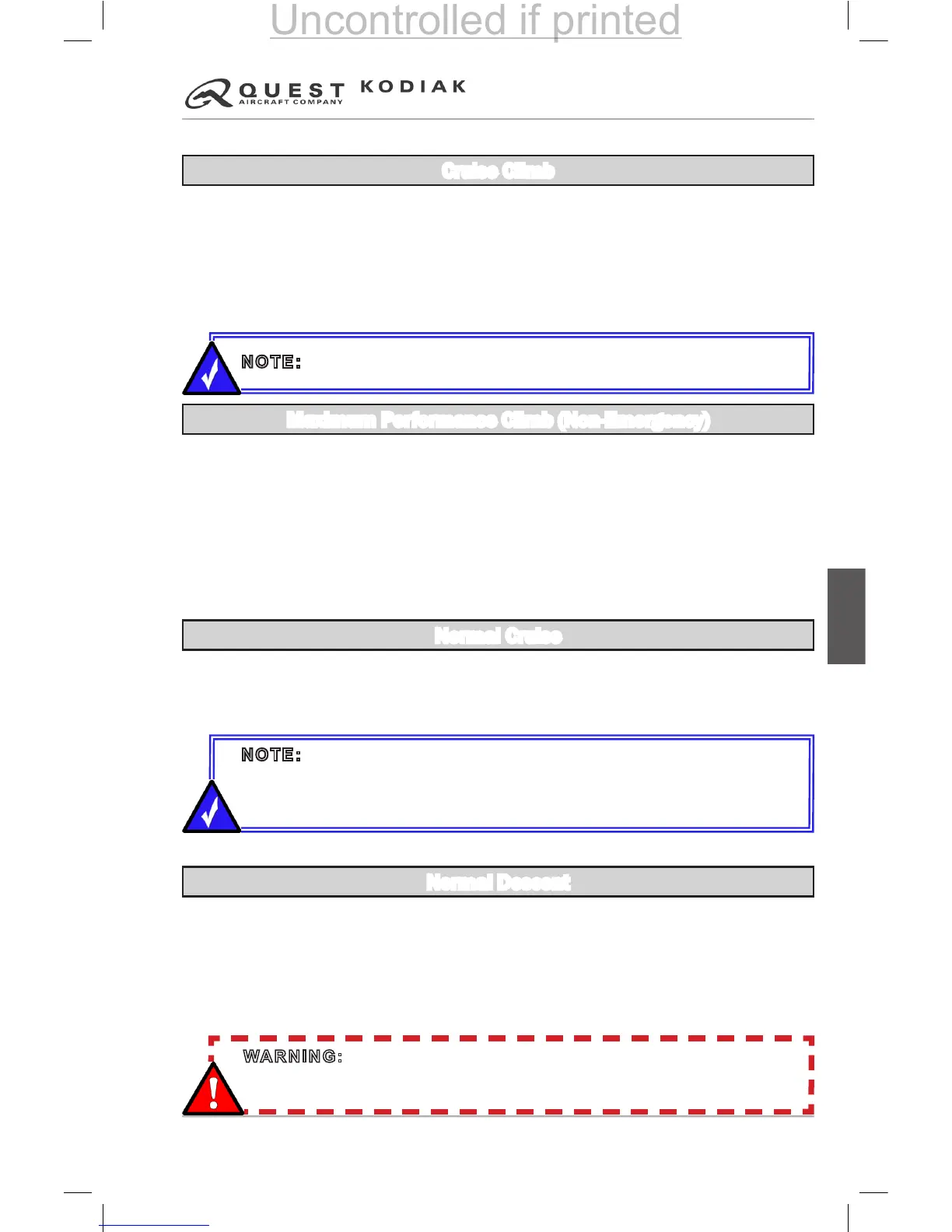Pilot’s Operating Handbook
4-13
DO NOT USE FOR FLIGHT OPERATIONS
Section 4
NORMAL PROCEDURES
100 SERIES
Procedures
ENROUTE CLIMB
Cruise Climb
1. Auxiliary Fuel Pump ............................................................................... STBY
2. Pitot/Static Heat
.... ON when OAT is less than 5°C and visible moisture present
3. Engine Inlet
........................................................................... AS REQUIRED
4. Airspeed ...................................................................................110-120 KIAS
5. Torque
............ SET (refer to Maximum Torque for Climb chart in “Section 5”)
6. Propeller
...............................................................................2000-2200 RPM
7. ITT and
Limits ..........................................................................OBSERVE
Maximum Performance Climb (Non-Emergency)
1. Auxiliary Fuel Pump ............................................................................... STBY
2. Pitot/Static Heat
.... ON when OAT is less than 5°C and visible moisture present
3. Engine Inlet
........................................................................... AS REQUIRED
4. Airspeed ..........................................................................................101 KIAS
5. Propeller
...............................................................................2000-2200 RPM
6. Torque
..............Set (refer to Maximum Torque for Climb chart in “Section 5”)
7. ITT and
Limits ..........................................................................OBSERVE
CRUISE
Normal Cruise
1. Pitot/Static Heat .... ON when OAT is less than 5°C and visible moisture present
2. Propeller
...............................................................................2000-2200 RPM
3. Power .......SET per Cruise Performance tables in “Section 5” of this manual
(Observe Max Cruise ITT and
limits.)
DESCENT
Normal Descent
1. Engine Inlet ........................................................................... AS REQUIRED
2. Pitot/Static Heat
.... ON when OAT is less than 5°C and visible moisture present
3. Altimeter................................................................................................... SET
4. CDI
.............................................................................SET APPROPRIATELY
5. Power ........................AS REQUIRED to provide the desired rate of descent
6. Seats, Seatbelts and Shoulder Harnesses
........... ADJUSTED and SECURE
7. Inertial Reel Levers
.......................................................................... LOCKED
NOTE: Use of 740°C ITT is recommended for improved engine life.
WARNING: Failure to properly utilize the seat belts, shoulder harnesses,
and inertia reel locks could result in serious injury or death, should an
accident occur.
NOTE: Propeller RPM (Np) may be set as low as 1900 RPM to reduce
cabin noise. Do not exceed 1840 foot-pounds of torque, 740 degrees C
ITT, or 101.6% NG. To achieve optimum cruise performance, set Np at or
above 2000 RPM.
